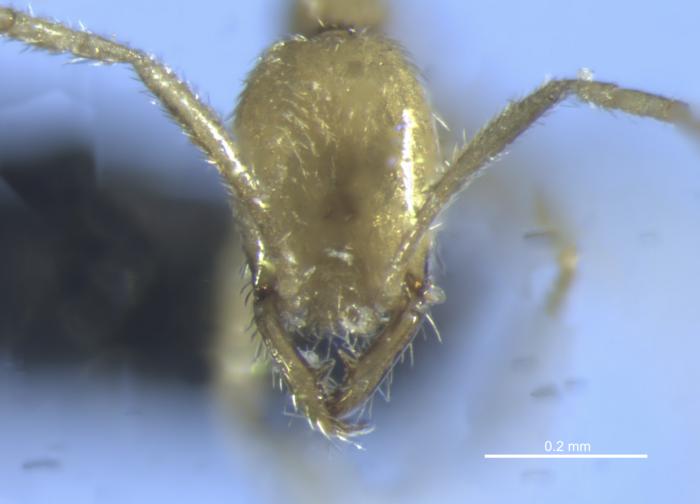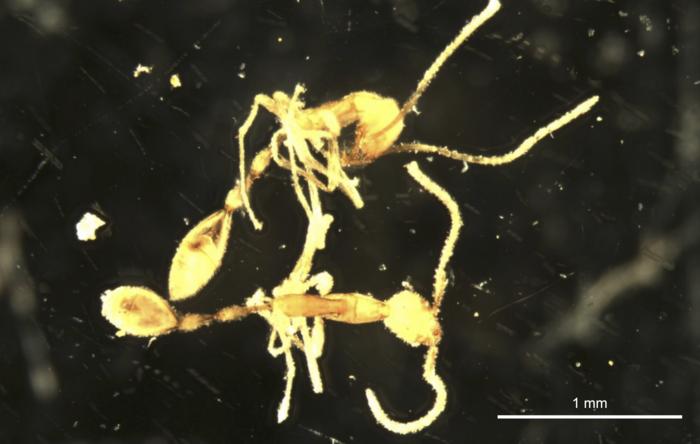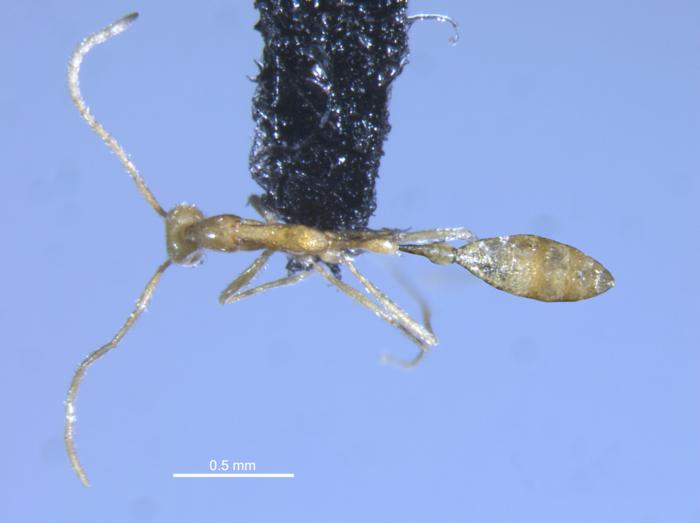A strange, ghost-like ant discovered deep underground has been declared a new species, with a shiny new Harry Potter-themed name to boot. Leptanilla voldemort, as the novel species has been called, is pale, slender, and prefers life on the dark side, much like its namesake.
Just two specimens of the mysterious ant were discovered in the dark depths of the underground in Pilbara, north-western Australia. They have an extremely slender body as well as long, spindly antennae and legs, and long, sharp mandibles.
This unusual morphology has raised lots of questions about the new species, but one thing seems certain: “Leptanilla voldemort is almost surely a predator, a fearsome hunter in the dark,” Dr Mark Wong, lead author of a study describing the species, said in a statement.

A full-face view of L. voldemort, showing its sharp mandibles.
Image credit: Mark K. L. Wong, Jane M. McRae
“This is backed up by what we know from the few observations of specialized hunting behaviors in other Leptanilla ant species, where the tiny workers use their sharp jaws and powerful stings to immobilize soil-dwelling centipedes much larger than them, before carrying their larvae over to feed on the carcass.”
What exactly L. voldemort preys upon is not known – but centipedes, beetles, and flies were among a number of subterranean invertebrates collected in the same area.

The two individuals of L. voldemort collected in Pilbara.
Image credit: Mark K. L. Wong, Jane M. McRae
Leptanilla is an elusive genus of ant – only around 60 known species belong to it – that forms small colonies and nests and forages exclusively underground. Ants within the genus are pale, blind, and teeny tiny – measuring just 1-2 millimeters (0.04-0.08 inches) – and as such are rarely collected and poorly understood.
In fact, L. voldemort is only the second leptanilline species ever documented in Australia, the first being Leptanilla swani, which was described in 1932 and has barely been spotted since.
Almost a century later, this newly discovered “ghostly” ant is joining that exclusive club. During an ecological survey to document animals living belowground in Pilbara – one of the oldest land surfaces on Earth – scientists lowered a net down a 25-meter (82-foot) hole, scraping the sides in the hopes of recovering some strange subterranean specimens. And they weren’t disappointed.

A top-down view of L. voldemort.
Image credit: Mark K. L. Wong, Jane M. McRae
Because of its svelte build, L. voldemort is unlike any other Leptanilla species, apart from one found in Iran. It’s also practically see-through, hence its comparison to He-Who-Must-Not-Be-Named. The moniker “pays tribute to the antagonist in the Harry Potter book series, Lord Voldemort, a terrifying wizard who, like the new ant, is slender, pale, and thrives in darkness,” the team behind the discovery write in their study.
L. voldemort isn’t the first curious creature to pay homage to the wizarding world. Weird and wonderful beasties have been named after all sorts of people, places, and things in the canon – from beloved characters and “redeemed” villains to dementors and even the sorting hat.
The new study is published in the journal ZooKeys.
Source Link: Spooky “Ghostly” Ant Named After Voldemort Is New-To-Science Species